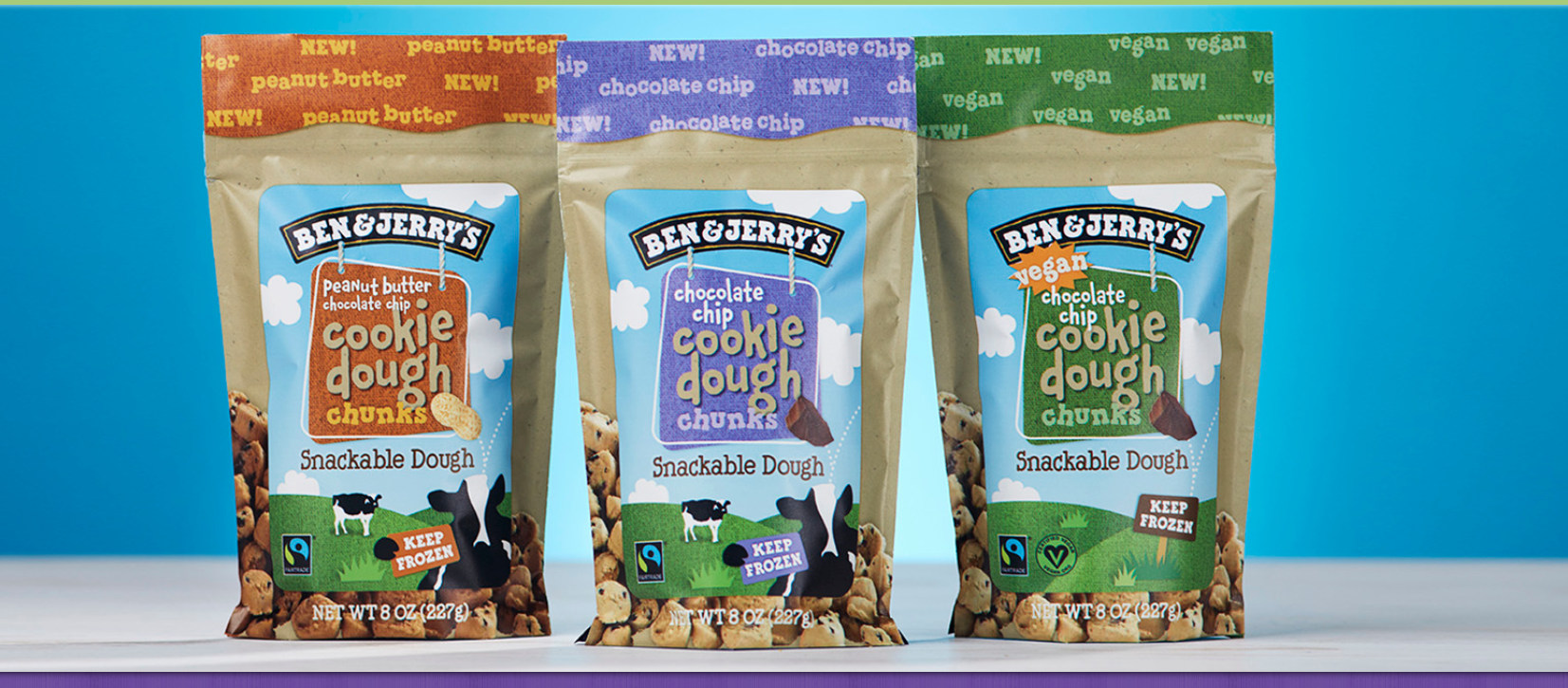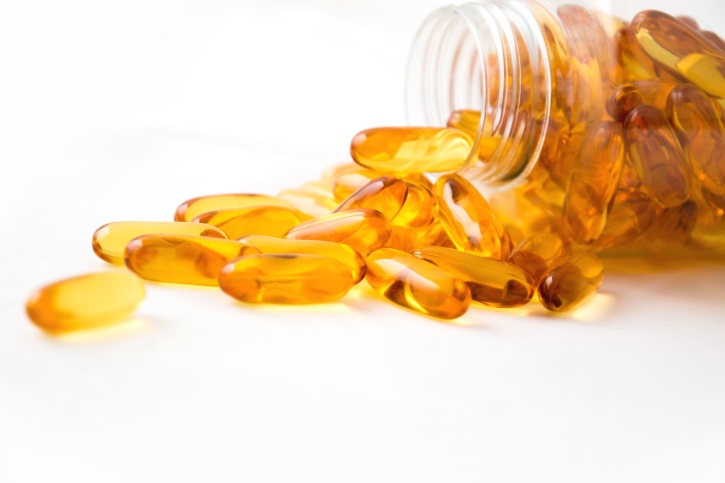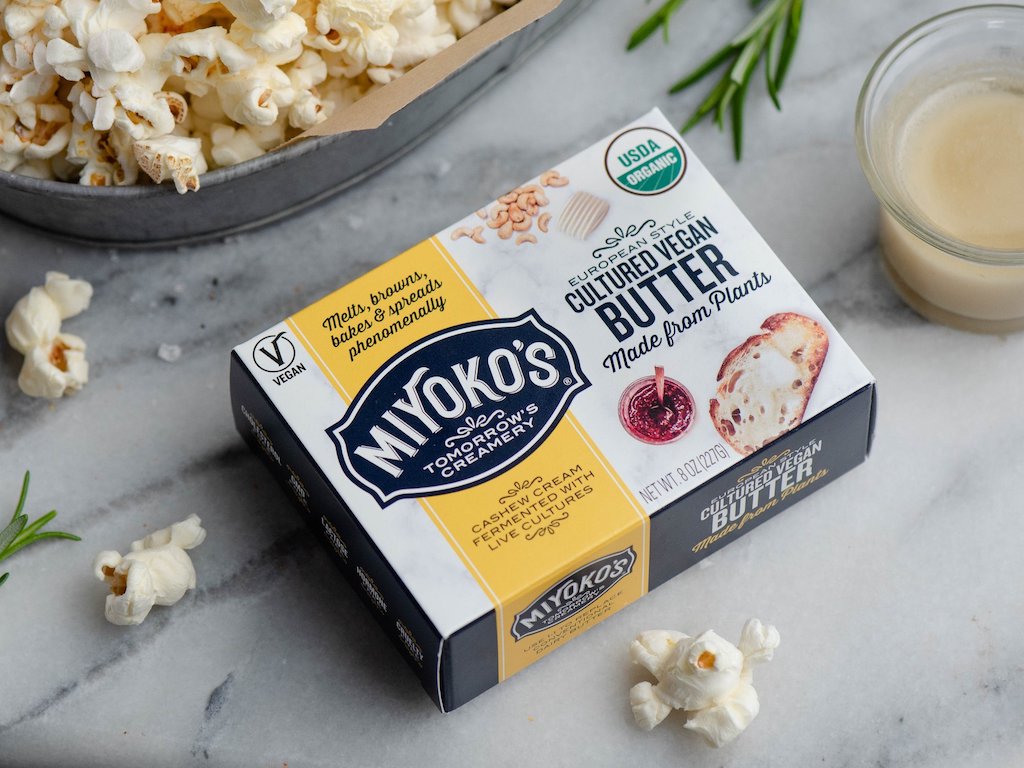
As a kid, the cookie dough eaters were people of legend. They were characters in teen movies and caricatures in commercials. But they walk among us. You may be one. I’m betting you are because safe-to-eat cookie dough is everywhere.
No matter your special diet, there’s a cookie dough to fit it. You can buy bags filled with Ben & Jerry’s dough chunks. You can purchase rolls of safe-to-eat, slice-and-bake dough from Pillsbury. You can also scoff egg-free cookie dough snack bars or dig into a bag of keto-approved dough bites. We’ve reached peak cookie dough.
And it’s not just because cookie dough is delicious, at least that’s not the only reason cookie dough has become a ready-to-eat darling of the mass-produced food world. While raw eggs can harbor salmonella, the dough’s uncooked flour also presents a risk. It’s a breeding ground for E. Coli, especially when you forget it for months in the depths of your cupboard. Simply omitting eggs doesn’t make uncooked dough safe to eat.
It’s this gap between cookie dough’s carefree, innocent aura and its bacterial menace that, to me at least, makes it such an interesting category. How do you convince people to forget the scary reasons why they’re purchasing your product? How do you make them focus on the exciting, tasty experience they’ll have? How do you take what is frequently described as a guilty pleasure and turn it into something publicly acceptable?
Ben & Jerry’s does it by selling bags of the cookie dough chunks that dot its ice cream. As founders Ben Cohen and Jerry Greenfield explained on How I Built This, the extra-large chunks tempt people with the promise of an ultra-satisfying upcoming spoonful. While most cookie dough ice creams taste like vanilla with the occasional chocolate-studded sugar thrown in, Ben & Jerry’s cookie dough chunks have a recognizable taste. Consumers know them, and love them. This familiarity means people desire the dough itself, not just the ice cream.
So, after years of begging, Ben & Jerry’s (as owned by Unilever) released cookie dough bites. These bags of chocolate chip-studded, peanut butter and vegan versions have nothing to do with ice cream. But it doesn’t matter. The Ben & Jerry’s brand validates cookie dough’s solo consumption because it has validated its consumption in ice cream. Consumers have been conditioned to see ice cream as an acceptable vehicle for dough-eating and this link lingers even outside of the pint.
If we take this operation to be the core function of how brands engage with consumption -- that is by stimulating permission mindsets -- then this operation should work for all cookie dough brands. But Nestle’s Tollhouse complicates this theory. When the company adapted its formulation to be eaten raw, it didn’t make it bakeable. Instead, the company made entirely new products: a tub of edible cookie dough and chocolate-dipped bites. While these products are clearly labelled as safe to eat, their distance from the core product that they are attempting to mimic -- that is slice and bake cookie dough -- suggests that the mindset for dough consumption is different than the mindset for baking consumption.
Meanwhile, Pillsbury is converting its entire slice-and-bake cookie dough line up into a safe to eat formulation. Each package has a label proclaiming its safety. This is useful for parents who don’t want to fret if their child sneaks an unbaked slice, but it’s not likely to largely impact sales. Since cookie dough eating was already an established habit, albeit a naughty one, consumers don’t need a label to help them decide whether or not what they desire is safe to eat.
Selling cookie dough only -- the kind that definitely will not result in cookies -- demands brands connect to deeper consumer drives. Ben & Jerry’s caters to the desire for more and for novelty -- consumers can finally get a taste of just the dough. Meanwhile, Enlightened’s keto-approved cookie dough leans into the fact that its diet-driven formulation is low-calorie and gluten-free. Highlighting these supposed-healthy attributes enables Enlightened to push away the idea that cookie dough is a guilty pleasure. Instead, Enlightened appeals to shoppers who struggle to balance indulgence with health.
This need for safe-spaces and desire-driven enticements is part of the reason why I initially found the concept of cookie dough snack bars so confusing. Whoa Dough is a start-up that makes safe-to-eat cookie dough bars. The bars look like Larabars or Clif Bars, or any of the other, endless options that dominate grocery store shelves. But I’m not being fair. The brand shills its dairy-free, gluten-free and plant-based recipe. It’s high-protein, too. Whoa Dough follows Enlightened and Ben & Jerry’s directive by addressing the larger lifestyle interests that make consumers select one product over another. A Whoa Dough snack bar may not be hummus and carrot sticks, but it represents a hybrid of indulgence and pseudo-health that massages modern consumer desires.
While health is a large driver in supporting dough-eating, there’s another subset of the edible cookie dough boom that sees indulgence as the primary appeal. New York cookie dough bakery Do garnered long lines when it first opened precisely because there was such a large group of people who wanted to indulge in unbaked cookies. As founder Kristen Tomlan told Food52, “If we all loved cookie dough so much, why did we have to hide it? Why wasn't there a place where you could sit and enjoy it? Why hadn't anyone made it totally safe to eat?" Tomlan’s desire to develop a safe in which cookie dough was safe and acceptable to eat may not have the overt markers of health like Enlightened’s keto bites, but it does gel with more holistic and mindful eating attitudes. Do has succeeded because it acts as a safe space that sanctions unabashed indulgence. Its self-selecting. People who go to Do already enjoy cookie dough and find themselves among others who share their tastes. In this sense, Do creates a space of permissible consumption by showcasing a hidden habit and inviting participants to come together and feel safe in their taste preferences.
Edible cookie dough is here and people want it. While I don’t believe it’s a category with longevity, the lessons its successes offer underline the importance for brands in supporting mindsets of permissible indulgence. But not just any indulgence. Cookie dough’s popularity builds on previously established consumer habits. People were already eating it and treating it as a cheeky treat. These brand-sanctioned versions put that habit into the light and justifies it. This justification is a powerful emotion for brands to tap into, and one that any category of highly-desirable food product can use.
FUN FACT: If there’s one thing I learned while writing this piece, it’s that the keto community is obsessed with cookie dough. Who knew there would be so many diet approved versions out there? And why do they want the dough and not the cookie? I’m not too sure. But one of the strangest diet-sanctioned varieties I found was Ripple’s vegan dough. Ripple is a pea protein company that got its start making pea protein milk. It’s not the most delicious thing, but it does have a nutritional profile that’s more comparable to dairy milk than other alternatives and it’s nut-free, making it an allergy-friendly option. The company’s recipe is a pea protein palooza. Its uses pea protein milk and pea protein powder to create the dense, dough-like texture. Frankly, I think I’ll stick with the litany of chickpea-based recipes and products available.


